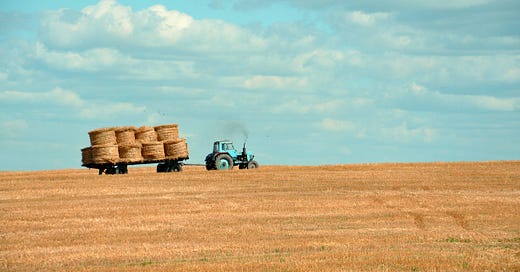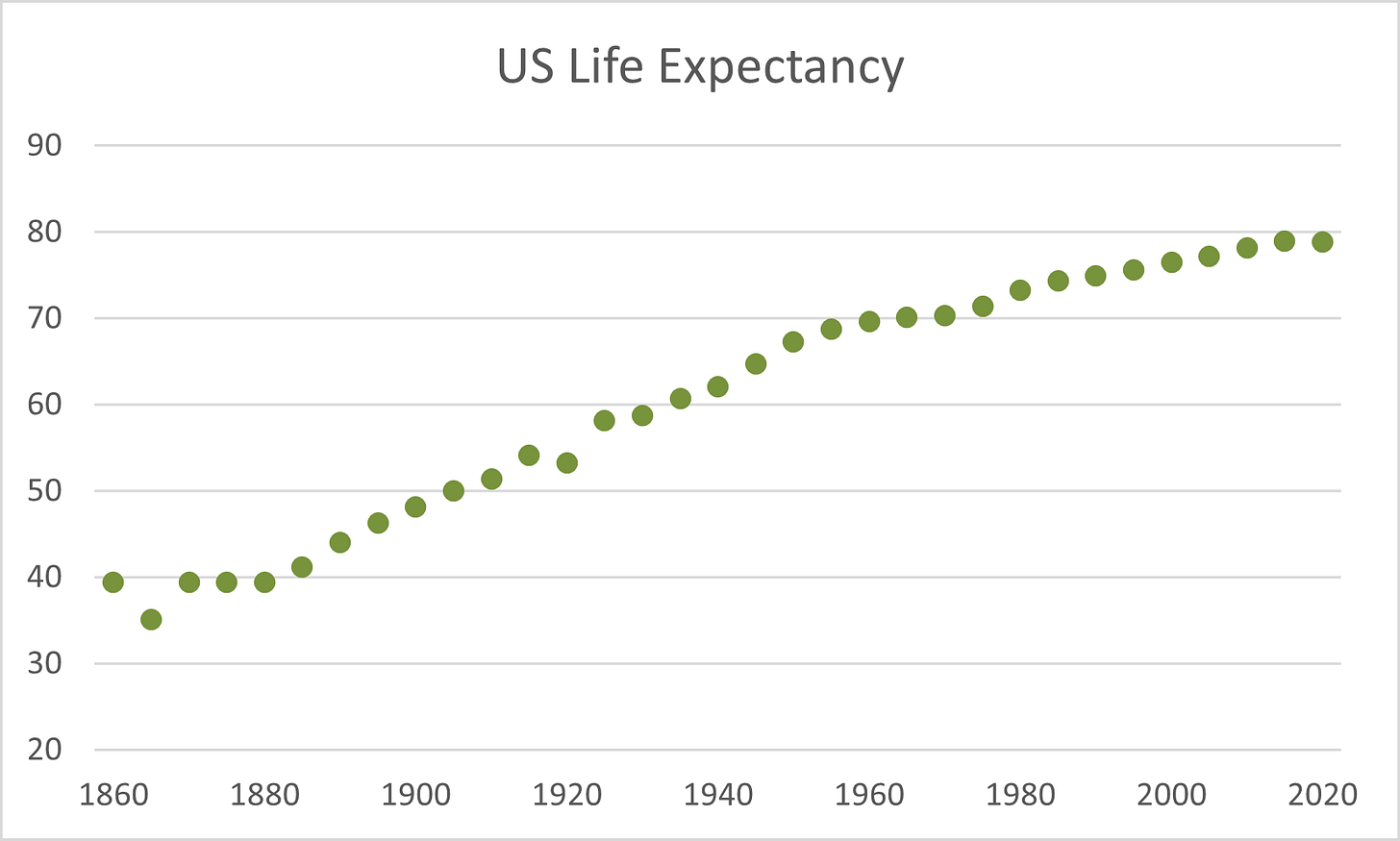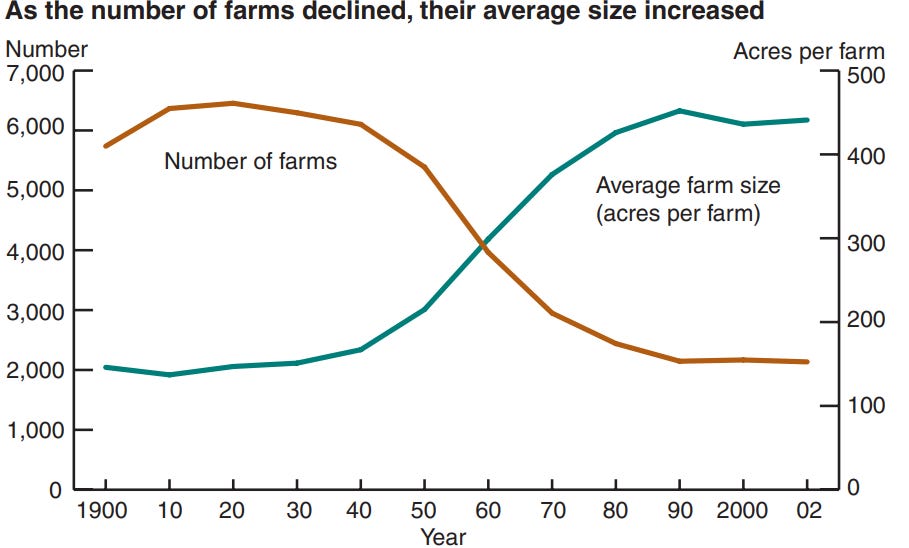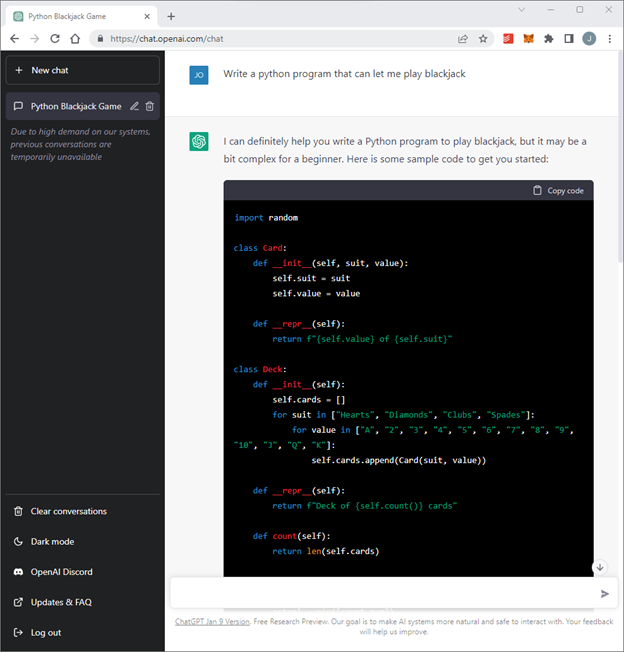
The robots are coming for our jobs again. Actually this time, it’s AI and software – like ChatGPT – coming for our jobs. But I think it’s a good thing. Like a corny motto from a trash bag company (that apparently lodged itself deep in my brain), don’t get mad… get glad.
I’ll explain what ChatGPT does, and why I think it’s a positive, but first, let’s borrow some lessons from history.
The industrial revolution was jam-packed with civilization-changing tech, mostly driven by embracing machines. This also had a huge impact on the labor force. In America in 1800, 83% of our population were farmers. Today – it’s closer to 1%.
It’s important to note that tech made this transition unavoidable. Imagine if the US government had been dead set against steam engines and wanted to protect farming jobs done manually. If the US banned steam engines, it would have fallen behind other countries on food and textile production. More goods would be produced in countries that do it more efficiently, and eventually we would import those goods, hurting US farmers. At some point, US farming would go away or be forced to adopt modern equipment. Either way, those farmers would need to find new work.
So here’s the first lesson we can learn from history: tech innovations will change how we work and what we work on. We can slow it down, but we can’t stop it.
Now, if we zoom out and think about the impact that this had, was it “good”? On the whole, yes, it was absolutely good. US GDP went up, since farms were more productive, and in cities we were churning out products on assembly lines. And despite dangerous conditions in many factories, our life expectancy shot up too.
So here’s lesson number two: on the whole, embracing tech that improves our efficiency – changing how we work – is a good thing for society.
But, on the other hand, while the impact in general is good, the impact for specific sets of people can be either very good or very bad. During the transition away from farming, there were people who hugely benefitted and hugely suffered. Farmers who were among the first to embrace new tech outperformed and bought up other farms. Look at how much consolidation there has been since the 1860’s:
And even if you didn’t own a farm, and instead just worked on one, you would better off immediately moving to the city and starting a higher paying factory job. In 1900, the US census shows factory workers earned more than double what farmers did ($487/yr vs $178/yr).
So the third lesson: being proactive is important. Being the tech-centric farmer that buys other farms, or being the worker that quickly moves to a factory job, leads to a better outcome for that individual.
Enough with the farming example… there have been others too. Manufacturing machines eventually disrupted factory workers, and global data and connectivity allowed outsourcing to disrupt call centers. Now, AI is threatening to disrupt jobs we thought were safe, like being an artist, a doctor, or writing code.
I started tinkering with ChatGPT (a chat-based AI app), a few months ago, and I can confidently say it represents a huge step forward in AI. Whereas other AI apps in the last 20 years have been very niche – like a bot that’s great at chess – this one can do a little of everything. It’s a step towards what the industry calls artificial general intelligence (AGI).
Let me show you three key “skills” ChatGPT has, using a few examples.
It can draft documents for you. It can take a shot at: love letters to your first crush, a request for a raise, or an executive summary of a key project.
The specific AI model it uses is called a large language model (LLM). Basically, the developers of the app have trained ChatGPT on a huge dataset, where the only skill that it learned is “which word is most likely to come next in this context?” It uses that skill to parse the prompt (whatever we type) and to formulate a response to us.
While it doesn’t have access to the internet directly (the way Google does, for example), much of the dataset it was trained on is internet data. To put it bluntly – it knows some things. So this brings us to the second cool trick ChatGPT can do…
It can summarize the things it knows to help us answer questions
Now, it’s important to remember how it creates these answers. It’s an LLM weighing the probabilities of different words, and giving you the most probabilistic set of words that it can. Each response is customized to the prompt, based on probabilities. So there’s a chance, especially for more complex topics, that it tells you things that aren’t accurate.
For example, I know that in fact there are not any downsides to bitcoin, and it is going straight to the moon! All jokes aside, you do need to be careful with some of these responses, not taking them as gospel.
It can help you write code and use software more effectively. You could technically lump this in with #2, since it’s a different version of “things it knows”, but I think the use cases are pretty different. Here are a few examples
Now that we know what it does, let’s get back to what it means for us. Here’s my take:
We can’t stop AI from changing the way we work.
Long term (for society): this is good.
Short term (for individuals): it can be bad or good. We should be proactive.
To tie-in some news, Microsoft seems to be taking this advice to heart. They were among the first to invest in OpenAI (the creators of ChatGPT) back in 2019, and have put $3B into the company so far, with plans for another $10B. And OpenAI has licensed their tech to Microsoft. AI being able to draft high quality documents could make Microsoft Office obsolete, but instead of reacting defensively, they are proactively building ChatGPT into new prototypes of Outlook and Word. And they are also thinking about pairing a ChatGPT-style interface with their Bing search engine. Here’s a link to a WSJ article that discusses this in more detail.
This is a great move by Microsoft. Compared to their industry peers, they are quite an old company — but they seem to have a knack for learning new tricks.
Now, moving on to how we can respond as individuals — everyone should do their best to understand disruptive tools like these. If you do, you can be like the farmers who adopted new tech, hugely improving their efficiency and securing their future. Or, you could be like those who were quick to leave farms and go work in factories with higher wages.
The only bad response is to turn a blind eye.
I’ll leave you with a story.
Right out of college, me and a buddy went on a surfing trip to Costa Rica. Previous surfing experience: none.
It was a trial by fire water, and one of the first things we learned was about was the pattern of the break. At our beach, there would be seven nice breakers in a row, followed by maybe 30 seconds or a minute of calm. Not knowing this, and nervous about going too deep as newbie surfers, our first day was a struggle-fest.
We paddled into crashing waves, and we did our best to stay afloat while spotting a good one to catch. Without warning, Wave 3 of 7 would be on top of me. I’d take one or two quick paddles, start to stand up, and mistime it – falling head over heels and trying to dodge the sharp fins of the board. Then, I’d gasp for air before Wave 4 arrived, and the next and the next.
After a lesson from a local, we finally learned a better way. Rather than parking in the middle of the break, you need to paddle deeper — all the way to the edge of the break. Once you’re there, it’s a whole new world. You can see everything coming, and you have plenty of time to take any wave you want. You can even sit there all day, paddle-in during the calm between sets, and never take a wave.
What’s the point?
Seeing what’s coming is better than letting the waves crash over your head. I’d highly encourage you to check out ChatGPT for yourself, so you can see what’s coming. Here’s the link. You need to set-up a free account, but then the world is your oyster.











